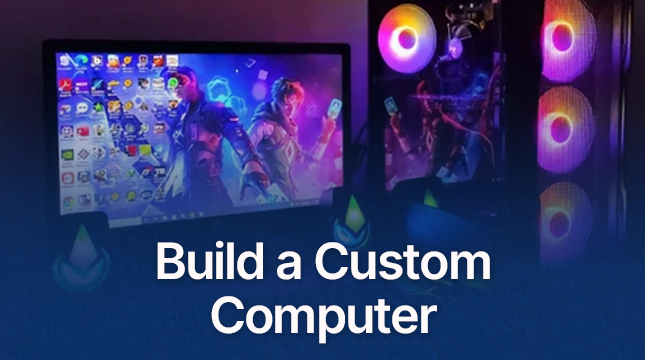This website uses cookies so that we can provide you with the best user experience possible. Cookie information is stored in your browser and performs functions such as recognising you when you return to our website and helping our team to understand which sections of the website you find most interesting and useful.
How to Build a Custom Computer: A Beginner’s Guide

Introduction
Building your own computer is not only a fun project, but it also allows you to create a system tailored to your needs and budget. This guide will walk you through the basic steps to build a custom computer.
Step 1: Identify Your Requirements
Before getting started, decide what you’ll use your computer for. Whether it’s gaming, video editing, programming, or general use, your purpose will help you choose the right components for your custom build.
Step 2: Research the Components
Explore the different components you’ll need for your computer, including:
- CPU (Central Processing Unit): The core of your computer, responsible for handling tasks.
- Motherboard: The main board that connects all your components together.
- RAM (Random Access Memory): Temporary memory for running programs and data.
- Graphics Card (GPU): For gaming or video editing, this component handles graphics processing.
- Storage: Choose between a Hard Drive (HDD) or a faster Solid-State Drive (SSD) for data storage.
- Power Supply Unit (PSU): Powers all components of your computer.
- Case: The box that holds and protects your components.
- Cooling System: Includes fans and coolers to prevent your system from overheating.
Step 3: Ensure Component Compatibility
Make sure all your components are compatible with each other by checking specifications and compatibility guides from manufacturers.
Step 4: Assemble the Parts
Using the motherboard manual as a guide, begin installing your CPU, RAM, and other parts. Be sure to connect the power supply correctly to both the motherboard and the other components.
Step 5: Install an Operating System
After assembling the hardware, install the operating system of your choice, such as Windows, macOS, or Linux.
Step 6: Install Drivers and Software
Once the operating system is up, install the necessary drivers for your components and any software you plan to use.
Step 7: Test Your System
Turn on your computer and run tests to ensure all the components work as expected.
Conclusion
Building a custom computer is a rewarding experience. With careful research and by following these steps, you can create a system that perfectly matches your needs.

Let's Start Your Project
Get free consultation for your digital product idea to turn it into reality!
Get Started




